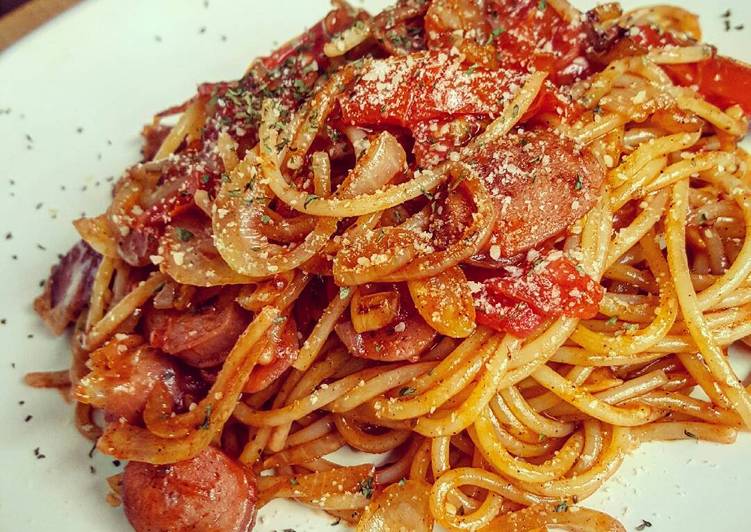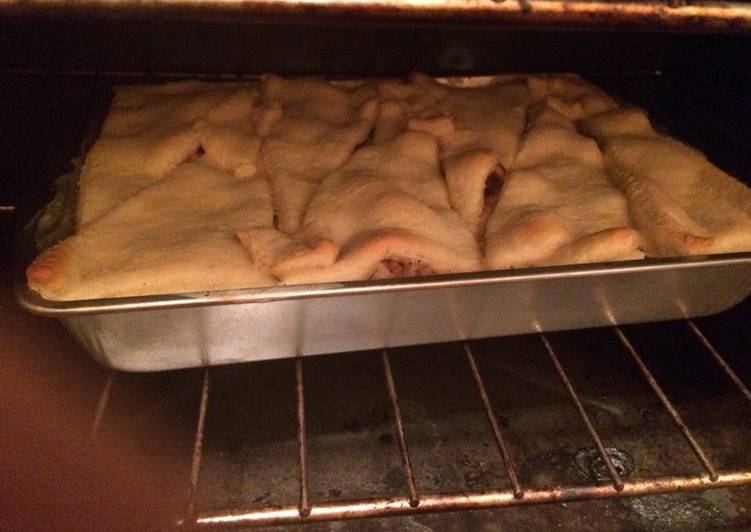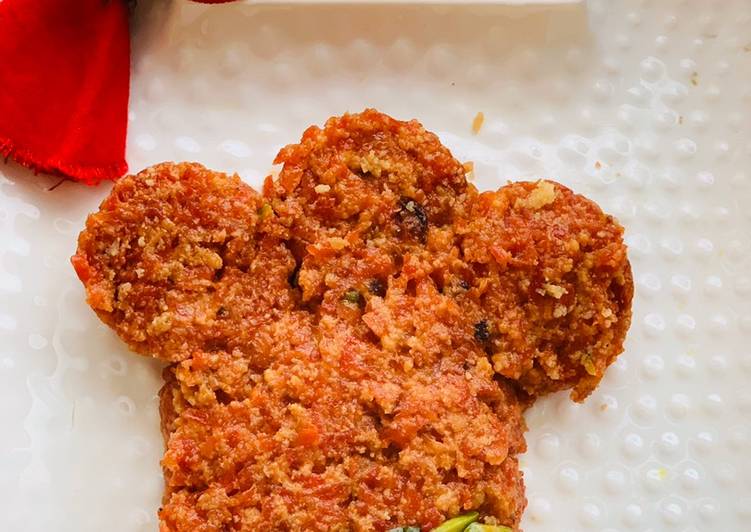
Hello everybody, it’s me again, Dan, welcome to our recipe page. Today, we’re going to make a distinctive dish, napolitan japanese spaghetti with chicken sausage. It is one of my favorites. For mine, I am going to make it a little bit unique. This is gonna smell and look delicious.
Napolitan Japanese Spaghetti with Chicken Sausage is one of the most popular of current trending meals in the world. It is enjoyed by millions daily. It’s easy, it’s quick, it tastes yummy. They’re nice and they look wonderful. Napolitan Japanese Spaghetti with Chicken Sausage is something which I’ve loved my whole life.
Try this easy Japanese ketchup spaghetti (Napolitan) recipe with bell pepper, mushrooms, garlic, and sausage. Yes, it's a spaghetti recipe that is seasoned with ketchup. This ketchup flavored pasta is popular and widely available at cafe restaurants in Japan and we call it Napolitan (ナポリタン).
To begin with this recipe, we have to prepare a few components. You can cook napolitan japanese spaghetti with chicken sausage using 17 ingredients and 5 steps. Here is how you can achieve it.
The ingredients needed to make Napolitan Japanese Spaghetti with Chicken Sausage:
- Make ready 1 serving pasta
- Get 2 cloves garlic
- Get 1 sliced chicken sausage
- Prepare 1 small sliced onion (1/4 for the big one)
- Make ready 1 fresh sliced small tomato
- Get 1/2 tsp bell pepper powder
- Get 1 dash black pepper
- Make ready 1 dash oregano powder
- Prepare 1/2 tsp chicken stock powder (for boiling the pasta)
- Get 1/2 tsp chicken stock powder (for seasoning)
- Prepare 1 tbs olive oil
- Get 1 tsp orange olive oil (optional)
- Get 2 1/2 tbs tomato ketchup (I used it without measurement)
- Get 1/2 tbs sugar
- Make ready 1 tbs grated parmesan cheese
- Get 500 ml water for boiling (I didn't measure it)
- Prepare 1 dash chopped parsley for garnish
Spaghetti Napolitan is a ketchup-based pasta and one of the popular yōshoku (Western-style food) dishes. It is a simple pasta dish but very tasty. While the sauce of the Italian pasta is made with crushed/pureed tomato and herbs, the Japanese Napolitan sauce uses ketchup/tomato sauce. In this video, we make spaghetti napolitan, which is a popular pasta dish from Japan!
Steps to make Napolitan Japanese Spaghetti with Chicken Sausage:
- Boil your pasta with 1/2 tsp of chicken stock powder. Boil about 7-8 minute. Drain your pasta, and keep the water for later purpose.
- Stir fry garlic with olive oil until fragrance, add chicken sausage, continue cook for a while (around 1 minute).
- Add sliced onion, fresh tomato, freshly cooked pasta, season with bell pepper powder, black pepper, tomato ketchup, sugar, oregano, chicken stock powder, and add orange olive oil. Stir until all combine, and add a ladle of pasta water, continue stirring until all combine. Last but not the least, add a dash of grated parmesan cheese, stir to combine.
- Serve your pasta on your big serving plate, sprinkle your napolitan spaghetti with grated parmesan cheese and chopped parsley.
- Ready to be serve!
Japanese Napolitan Spaghetti - Tensuke Market. This video will show you how to make Spaghetti Neapolitan, a tasty and nostalgic Japanese pasta dish. Spaghetti is pan-fried with onion and bell pepper and. When I was a child, Napolitan pasta was the only spaghetti that was available at local restaurants. Napolitan spaghetti (no, not Neapolitan) isn't technically wafu, but rather youshoku or Western-style Japanese — the difference is subtle, and involves the use of Western ingredients, like ketchup, instead of Japanese ones like soy sauce.
So that is going to wrap this up for this exceptional food napolitan japanese spaghetti with chicken sausage recipe. Thank you very much for your time. I’m confident you will make this at home. There is gonna be interesting food at home recipes coming up. Don’t forget to save this page in your browser, and share it to your loved ones, colleague and friends. Thank you for reading. Go on get cooking!

